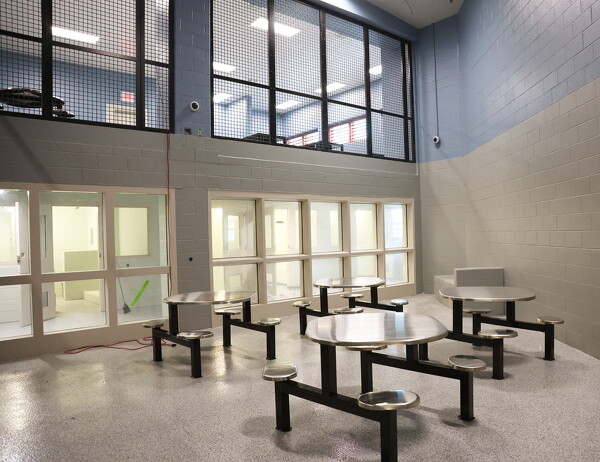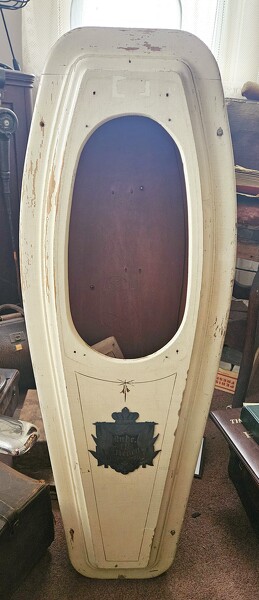ST. MARYS - St. Marys City Schools Board of Education members established a new capital improvement fund and transferred $9.25 million from the general fund into it at their regular board meeting on Wednesday.
The transfer will be used to gradually implement a 20-year cost assessment plan done by K-12 Consulting which looked at all of the district's properties and vehicles to determine what updates will be needed down the line.
"Nick (director of operations Nick Hager) and I started this back early 2024 or 2023. … Looking at all of our properties within the school district," treasurer Andy Wilker said. "Everything from roofs on down to concrete, asphalt, you name it. This 20-year plan is around $20 million towards the updates that would be necessary for, let's say the HVAC system were it to go down. Asphalt would have a 15-20 year useful life then it needs replaced, things of that nature. It includes buses, things like that. The 070 fund is there to be able to set aside monies in order to fund this project."
A capital project fund, often referred to by its accounting code of 070, can be used by school districts to set aside money, and accumulate money, for one or more capital projects. The dollars must be spent within 10 years of the fund's establishment and can be moved back into the general fund with board approval, per the State Auditor's Office website.
Superintendent Bill Ruane assured that this transfer does not mean the district is about to embark on a "spending spree."
"It's pretty much putting (the funds) into savings, and when we need it (or) if we need it, we have some there," he added. "If we need to move it back, we can move it back any time."
The transfer comes on the heels of the house's biennium budget proposal, House Bill 96, passed in April, which included a provision for public schools that carry forward more than 30% in unspent cash at the end of each year to be distributed back to taxpayers in the form of a property tax credit.
The proposal has received backlash from almost every school in the Grand Lake region, including St. Marys board members, who clearly expressed their disapproval of the proposal at a finance meeting last week.
"Essentially what the house wants to do (is) the house wants to give money back to the taxpayers and then have us put on a levy to have them vote to give us that money back," board member Brian Little said at the meeting.
Wilker explained to board members that their cash balance is funded by the school's entire base, which is made up of more taxes than just property.
"(In the proposed provision) they're also taking income taxes, which is only based upon those who are working, and then they're taking some real estate taxes, that everybody would've paid for," he said. "And they're gonna redistribute upon one class sector of tax payer, which is real estate. This is up and down, the most ridiculous thing I've ever heard."
The same house-passed budget proposal would increase the state's EdChoice program for non-public, charter schools by $500 million, compared to a $220 million increase that public schools would receive. The EdChoice program provides students from designated public schools scholarships to attend private schools.
Little said with the house-passed budget, Ohio House Speaker Matt Huffman, R-Lima,
"wants to give the state's money to private schools, catholic schools, other private schools and take it from us."
"And there's what … 5% of all school districts in the state are private (and) 95% are public schools? And he wants to cut the money from 95% of the schools and give it to the 5%," he continued.
The budget is now going through hearings in the senate finance committee. The Senate will pass their version of the biennium budget bill this month.
From there, the House and Senate will reconcile the differences between each of their proposals, as well as the governor's, then send it to the governor for him to either sign, veto or sign with line-item vetoes. The deadline for the officials to send the proposal to the governor is June 30. The biennium budget's implementation will start July 1.
In other business on Wednesday, school board members updated the district's middle school handbook to include a provision banning cell phones.
The change was done now to be proactive, as Ruane said that he's hearing there's a "99.9% chance" the state is going to include a provision in the biennium budget to ban phones from schools.
State legislation previously passed a law requiring schools to have student phone policies to be in place for the 2025-26 school year, however Senate Bill 158, passed by the state senate on Wednesday, would prohibit student cell phone use in public schools.
"We did have local control and we were required to have a policy," Ruane said. "We had a policy, which was pretty restrictive, just allowing (phones) in the middle school and high school, I think just pretty much at lunch and at the beginning and end of days. (But) everything that we are all hearing is that they're going to just ban them permanently. So we're kind of trying to be proactive here."
School board members also:
• passed resolutions recognizing the high school choir and symphonic band who both received superior ratings at state this year. This was the first time the choir has earned the rating since 1989 and the first time the symphonic band has earned it since 1995.
• renewed a contract with the St. Marys Police Department for a school resource officer for the 2025/2026 school year. Their previous officer Gary James recently retired from the department after four years at the school. He will be replaced by officer Jacob Little.
• approved the district's five-year forecast. Wilker presented it during last week's finance meeting.
They meet next at 6:30 p.m. June 4 in the high school auditorium.



